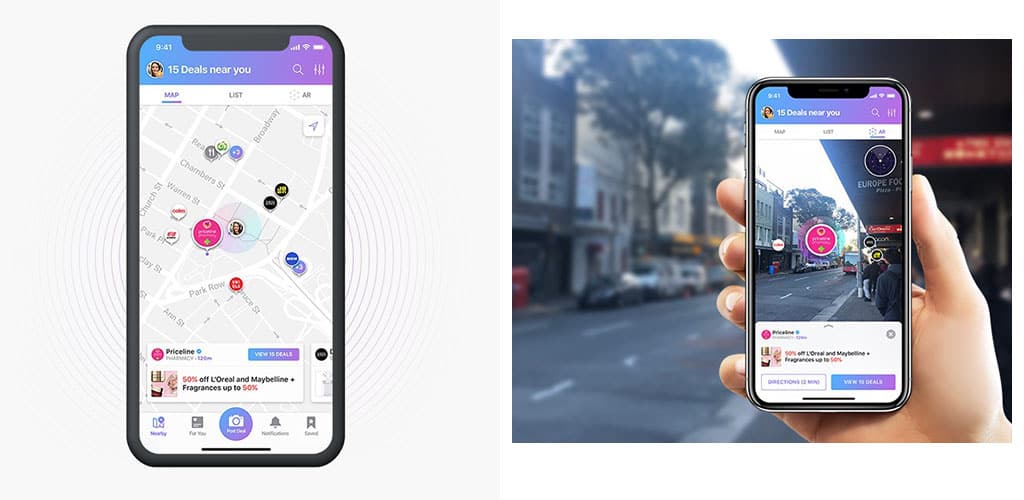A couple of years ago, people went crazy over Pokémon Go, an Augmented Reality mobile game which sent gamers from all walks of life and of different ages, on to the streets with their smart phones in hand to capture Pokémon as they appeared.
Using the phone’s camera with mobile location services, a Pokémon overlay video would appear on the phone display as if seen in a real-world environment. This proved to be a winning mix for gamers in search of a truly interactive experience.

The game introduced AR to consumers and mainstream businesses alike. It took a technology that had been deemed ‘difficult’ and ‘expensive’ and showed the revolutionary impact it could have on consumer experiences.
According to IDC, spending in Asia-Pacific (excluding Japan) on augmented reality and virtual reality will reach approximately AU$10.15 billion in 2019, representing an increase of 75.2% on the previous year. On top of this, consumer and enterprise/commercial spend on AR/VR products and services is expected to grow at a five-year CAGR of 70.7% between 2017 and 2022.
This rapid growth is hardly surprising. AR gives a user an interactive and immersive experience in a real-world environment, by adding layers of data and virtual objects onto a live view. Today, it’s not only gaming that is embracing AR. Different sectors are also applying it to enrich customer experience and interactivity with apps as they seek to gain competitive advantage.
AR in action in Australia
Retail
According to PayPal’s 2018 mobile commerce Trends Report around a third of Australian SMB retailers with online stores are currently developing, or intending to develop, an AR experience for their customers. AR is expected to be a huge trend for retailers in 2019, with the AR market expected to reach AU$215 billion by 2021.

In 2016, Specsavers launched Virtual Try On; an app that allows its customers to upload an image of their face and try on glasses using mobile devices – whether it’s a tablet, laptop or smartphone. The feature allows shoppers to see themselves in the hundreds of styles of glasses and sunglasses Specsavers has on offer. In a similar move, IKEA launched the IKEA Place app that enables customers to virtually place a full range of IKEA products – including sofas, lamps, rugs and tables – into their space to ensure it’s right for their room.

Tourism
AR is an exciting innovation for the tourism industry, allowing travellers access to more information about the destinations they want to visit to better plan their trips. Airlines and hotels are starting to provide AR apps offering virtual tours to explore different rooms and other facilities before making a booking. For example, Airbus iflyA380 is an iOS app with AR incorporated to let passengers take a virtual tour of the jetliner, including a peak into the cockpit.
Tourist hotspots such as museums, theme parks and historical sites are adopting AR to create interactive maps and direct visitors to interesting locations. For example, indigital uses drones, 4D mapping software, image recognition software and cultural law to bring Indigenous Australian cultural sites to life.
Education and Workforce Training
As the saying goes, a picture is worth a thousand words, and this is particularly true when it comes to education. When a student can see, touch and interact with an object, the lesson becomes far more engaging. As a result, AR has made its way into workforce training programs, particularly in specialised industries due to its cost-effectiveness, safety and reach.
In 2018, The NSW Department of Education and the Aboriginal Education and Communities Directorate launched Australia’s first augmented reality and digital skills initiative, The Njulgang Project. The program helped 20 Aboriginal and Torres Strait Islander students to learn about local culture and language from a group of Dharawal Elders and bring to life what they learned by creating an AR language learning resource based on the Dharawal Dreaming Story – ‘How the Animals Came to Dharawal Country’.
Automotive
AR’s ability to combine reality with digital content is proving beneficial to car manufacturers on a variety of fronts, including allowing sales staff to demonstrate safety features in dealerships before customers make a purchase.
Hyundai rolled out an AR tool in 2017 to dealerships across Australia to help sales staff demonstrate the features of its new ‘Reinvented i30’ hatchback. The AR app enables sales staff to show potential buyers a car’s built in safety features as well as colour and accessory options.
Healthcare
AR is also a powerful technology for those in the healthcare sector, providing immersive training for surgical procedures and offering a way to practice without risk.
Scans are a key diagnostic tool for today’s doctors, but MRIs and CT reports are one-dimensional. Using AR, a surgeon can layer virtual three-dimensional images of the same scans to produce an overview of the inside of the patient – complete with organs, blood vessels, and muscles – to understand any potential complications before surgery.
Interconnection: Speeding up AR
The successful applications of AR highly depend on the rapid transfer of real-time data generated from multiple touchpoints, such as customers, enterprises and service providers. The increased use of mobile and IoT devices also demands the processing of big data to make AR apps feasible for practical use.
The data involved in these apps includes images, visuals and audio, which need to be stored, analysed and transmitted constantly and instantaneously to enable users of AR apps to react and interact in real-time.
While cloud and network service providers play an important role in supporting the use of AR, enterprises need scalable storage and high interconnectivity between multiple parties to ensure the seamless delivery of AR-enabled experiences to app users and customers. How can they achieve this? Through Interconnection, also known as the private data exchange between businesses.

The second annual Global Interconnection Index, a market study published by Equinix, reveals Asia-Pacific’s Interconnection Bandwidth is expected to grow at a 51% CAGR to 2,200+ Tbps by 2021, meaning that interconnection is becoming the defacto method for companies to operate in today’s digital world. Businesses need to adopt an interconnection-first approach in order to directly and securely interconnect partners and service providers as well as users, analyse data and engage with customers in real time.
AR is transforming the way we work. With interconnection, the potential of AR can be fully unlocked to further enhance customer experience and offer more benefits to enterprises in the digital era.
Women Love Tech would like to thank Simon Lockington, Director of Global Solutions Enablement, Equinix Asia-Pacific for his article.






